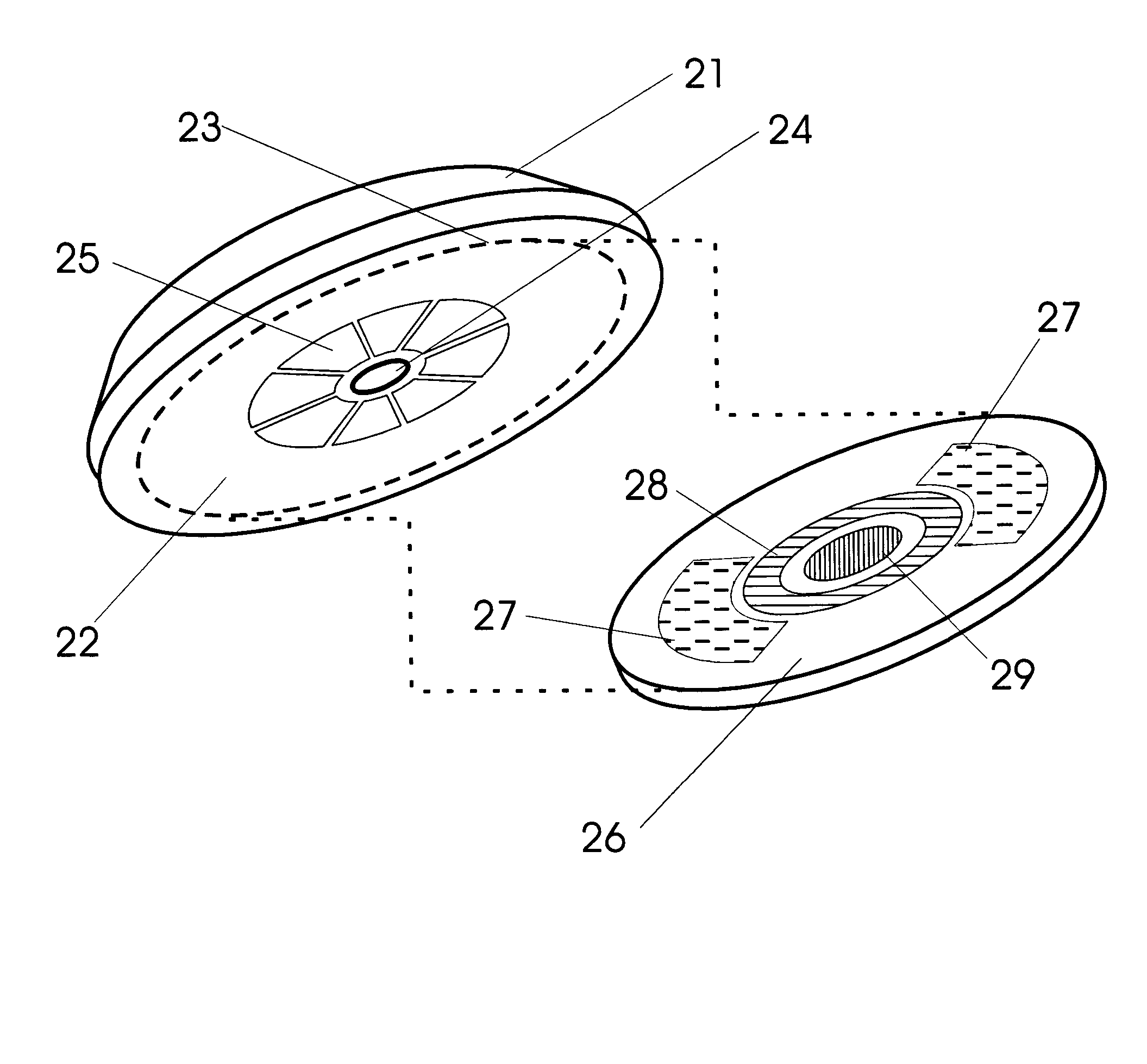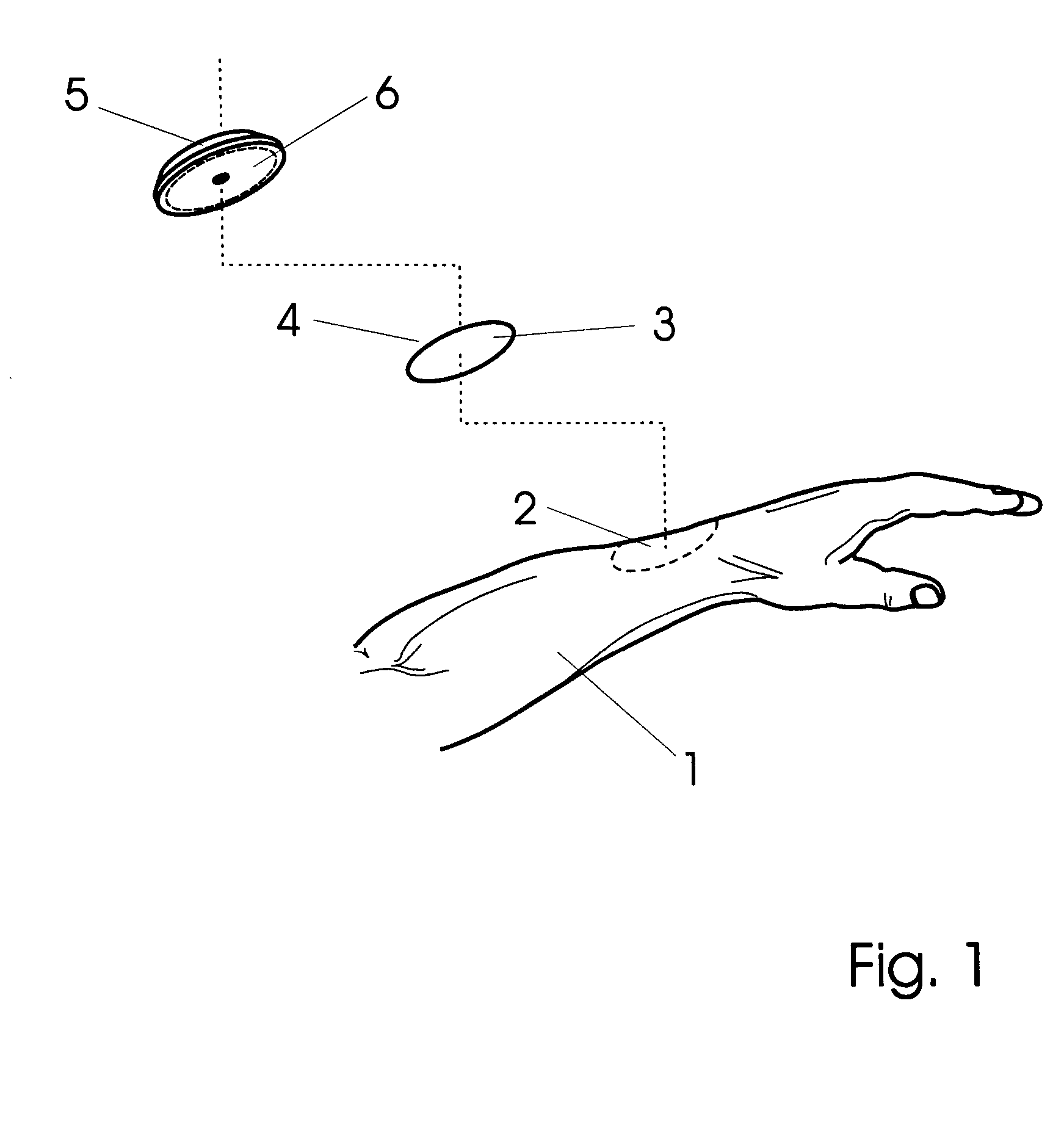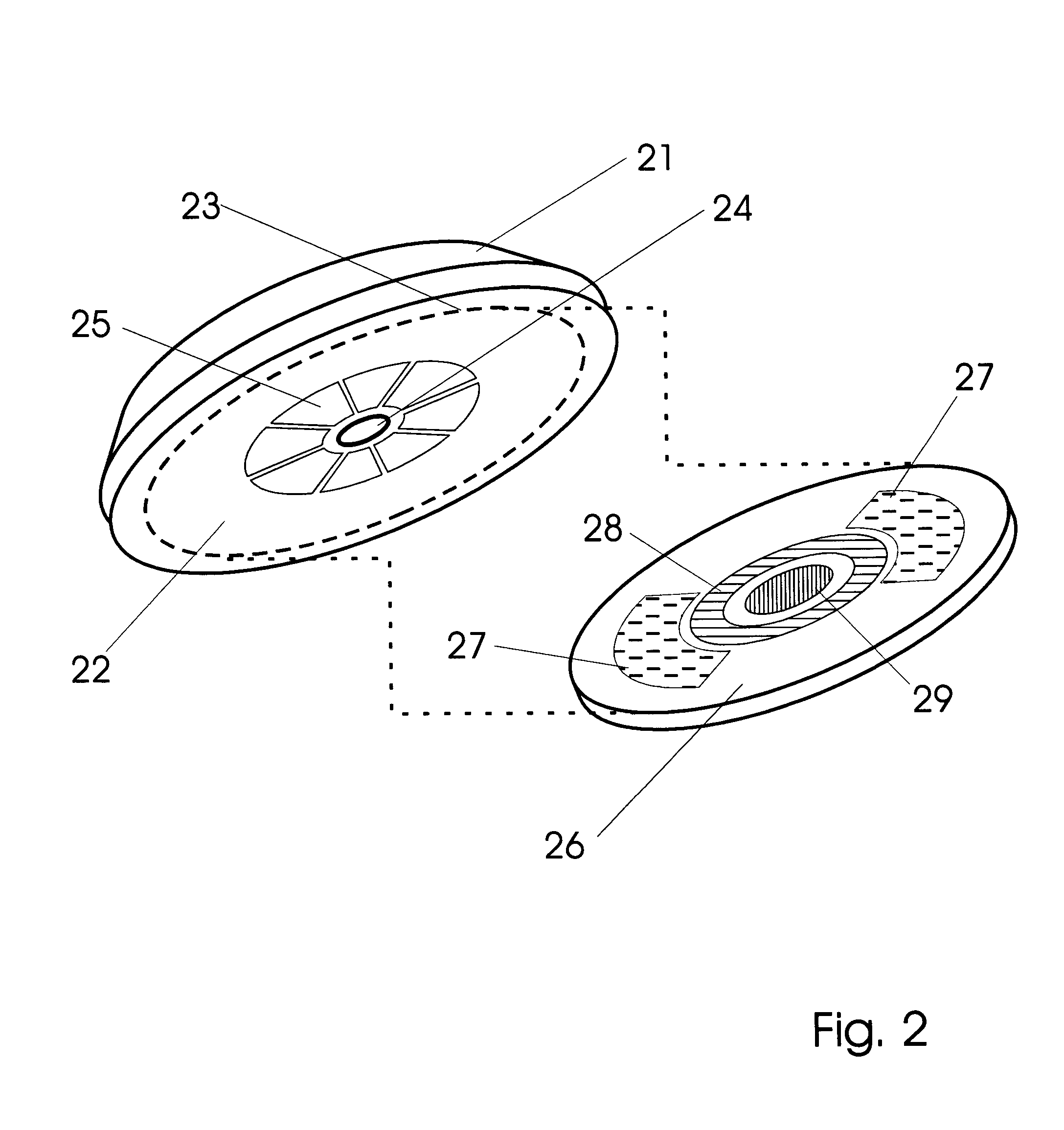Disposable couplings for biometric instruments
a biometric instrument and coupling technology, applied in the field of biometric measurement systems, can solve the problems of poor coupling between tissue and microscopic body, poor mechanical energy transmission between microscopic body and skin, and uneven surface of laser light, so as to facilitate transmission of energy, facilitate transmission of acoustic energy, and facilitate the effect of mechanical energy transmission
- Summary
- Abstract
- Description
- Claims
- Application Information
AI Technical Summary
Benefits of technology
Problems solved by technology
Method used
Image
Examples
Embodiment Construction
[0052] In accordance with each of preferred embodiments of these inventions, there is provided disposable coupling articles for use in conjunction with photoacoustic measurement systems. It will be appreciated that each of these embodiments described include an apparatus and that the apparatus of one preferred embodiment may be different than the apparatus of another embodiment.
[0053] These inventions are primarily defined as disposable couplings in photoacoustic biometric measurement systems, the devices being formed of a thin substrate element having an optical coupling to efficiently pass optical energy from an optical source into human flesh and an acoustic coupling to efficiently pass acoustic energy to / from an acoustic transducer into human flesh.
[0054] With reference to drawing FIG. 1, one can more fully appreciate the environment and use of preferred versions. A human subject 1 to be tested includes tissue at a test site 2 at the top side of the wrist where the skin is mod...
PUM
 Login to View More
Login to View More Abstract
Description
Claims
Application Information
 Login to View More
Login to View More - R&D
- Intellectual Property
- Life Sciences
- Materials
- Tech Scout
- Unparalleled Data Quality
- Higher Quality Content
- 60% Fewer Hallucinations
Browse by: Latest US Patents, China's latest patents, Technical Efficacy Thesaurus, Application Domain, Technology Topic, Popular Technical Reports.
© 2025 PatSnap. All rights reserved.Legal|Privacy policy|Modern Slavery Act Transparency Statement|Sitemap|About US| Contact US: help@patsnap.com



